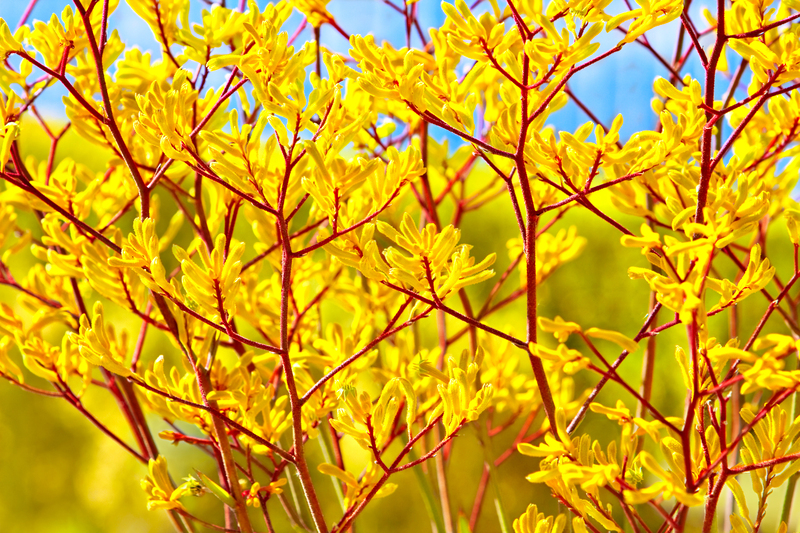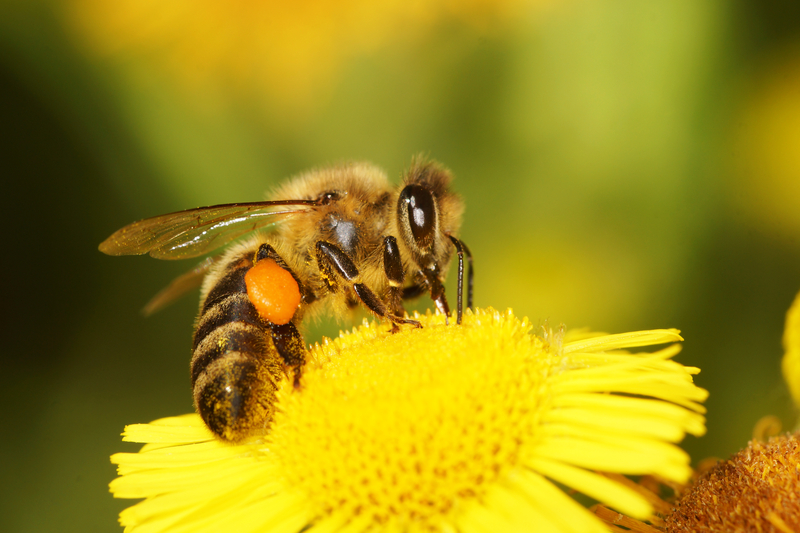Turning Trash into Treasure: Soil Enrichment
Posted on 12/06/2025
In a world increasingly aware of waste management and sustainable practices, the concept of turning trash into treasure for soil enrichment is gaining unprecedented importance. From kitchen scraps to yard cuttings, what we commonly consider trash can be ingeniously transformed to create nutrient-rich soil, yielding numerous ecological, agricultural, and economic benefits. This article explores effective waste-to-soil methods, the science behind organic matter transformation, and practical steps for individuals and communities to adopt this greener lifestyle shift.
Why Soil Health Matters
Soil is more than just dirt beneath our feet--it's a vibrant, living ecosystem that sustains plants, animals, and ultimately us. Healthy soil is loaded with organic matter, minerals, microbes, and insects, all collaborating to support crop growth, filter water, and store carbon. Unfortunately, modern agriculture, urbanization, and waste mismanagement threaten this delicate balance. As soil degradation advances, our food systems, water supplies, and climate stability are at risk.
Key Benefits of Soil Enrichment
- Improved crop yields and food security
- Enhanced water retention and drought resistance
- Increased biodiversity in both soil and plant life
- Carbon sequestration and climate change mitigation
- Reduced need for chemical fertilizers

Trash to Treasure: The Journey of Waste Transformation
Much of what we throw away is far from useless. Organic waste, like fruit peels, vegetable scraps, coffee grounds, eggshells, grass clippings, and even certain paper products, are laden with valuable nutrients that can enrich soil. The turning trash into treasure for soil enrichment paradigm embodies this transformation, diverting waste from landfills while rejuvenating the earth.
Common Household "Trash" Items that Enrich Soil
- Vegetable and fruit scraps
- Eggshells
- Coffee grounds and tea leaves
- Shredded newspaper and cardboard (ink-free and chemical-free)
- Grass clippings and leaves
- Sawdust (from untreated wood)
- Hair and pet fur
- Nut shells
Biodegradable vs. Non-Biodegradable Waste
It's crucial to distinguish between biodegradable (organic) and non-biodegradable (plastic, metal, glass, chemicals) waste. For soil enrichment with waste materials, only organic matter should be utilized, as non-biodegradable waste can harm soil health and contaminate crops.
The Science Behind Composting: Nature's Recycling System
Composting transforms organic waste into healthy humus through the activity of microorganisms, fungi, insects, and earthworms. During this process:
- Microbes break down complex molecules into simpler compounds
- Heat is generated, killing most pathogens and weed seeds
- Nutrients like nitrogen, phosphorus, and potassium are made available for plants
When properly managed, composting turns garbage to gold for soil, enhancing its texture, nutrition, and microbial life.
Stages of Composting
- Mesophilic Phase: Moderate temperatures initiate decomposition by bacteria and fungi.
- Thermophilic Phase: Temperature rises (up to 60?C), speeding up the breakdown of tough materials.
- Cooling: As easily-decomposable material is used up, temperature falls and larger organisms like earthworms thrive.
- Maturation: The compost stabilizes, producing rich, earthy-smelling humus.
How to Start Enriching Soil with Kitchen Trash: A Practical Guide
If you're keen to transform waste into black gold in your backyard or urban space, follow these simple steps for effective soil enrichment via composting:
1. Select a Composting Method
- Backyard Composting: Ideal for gardens, you can use piles, bins, or tumblers.
- Vermicomposting: Uses worms to decompose food waste quickly--perfect for smaller spaces or apartments.
- Bokashi Composting: An anaerobic method for smaller or odor-sensitive areas.
2. Build Your Compost Pile
- Layer Greens and Browns: Alternate nitrogen-rich greens (vegetable scraps, grass) with carbon-rich browns (dead leaves, cardboard).
- Shred large items to accelerate breakdown.
- Ideal ratio: About 2:1 browns to greens for a balanced, efficient pile.
3. Maintain and Monitor
- Turn the pile every few weeks for oxygen
- Keep it moist but not soggy--like a wrung-out sponge
- Watch out for foul odors, a sign of imbalance (add browns or aerate more)
4. Harvest and Use
- Finished compost is dark, crumbly, and smells earthy
- Mix into garden beds, use as top-dressing, or blend into potting soil for container plants
Advanced Techniques: Vermicomposting & Bokashi for Urban Spaces
Vermicomposting uses red wigglers (Eisenia fetida) to rapidly break down food and paper-based trash, producing high-quality worm castings (vermicompost) ideal for enriching soil. The process is simple:
- Use a breathable bin with moist bedding (shredded newspaper, cardboard)
- Add kitchen waste regularly (avoid citrus, spicy items, oils, and meat)
- Harvest worm castings after a few months for a powerful, odor-free fertilizer
Bokashi composting is another space-saving method. It uses specially prepared bran full of beneficial microbes which ferment kitchen waste--including cooked leftovers, dairy, and meat--without odor. The fermented waste is then buried in the soil where it breaks down quickly, feeding plant roots directly.
The Environmental Impact: Reducing Landfill Waste and Emissions
Landfills are a leading source of methane, a potent greenhouse gas. According to the Environmental Protection Agency (EPA), food and yard waste comprise over 30% of landfill material. By adopting the practice of turning waste into compost to enrich soil, we:
- Divert significant organic matter from landfills, cutting down emissions
- Conserve space for non-compostable waste
- Reduce dependence on synthetic fertilizers--often manufactured using fossil fuels
- Foster a local, closed-loop nutrient cycle in gardens, farms, and communities
Agricultural Applications: Trash as a Resource for Farmers
Composted waste isn't only for backyard gardeners. Many farms, especially those adopting regenerative agriculture or permaculture, integrate large-scale composting, vermiculture, or green manure techniques. Soil enrichment using recycled organic matter improves not just productivity, but also soil structure, microbial health, and resilience against pests and diseases.
Case Study: Community Composting Initiatives
Cities around the globe--from San Francisco to Milan to Seoul--are introducing community composting programs. Residents separate food scraps, which are collected and transformed at municipal composting systems. The result? Less landfill waste, better city parks and gardens, and stronger local food systems. Neighborhood drop-off points, compost co-ops, and school garden programs are just a few ways that cities are transforming urban trash into soil treasure.
Composting Do's and Don'ts: A Quick Reference
- Do compost fruit and veggie scraps, coffee grounds, tea leaves, yard clippings, eggshells, plain cardboard, and shredded newspaper.
- Don't include meat, dairy, oily foods, diseased plants, coal ash, pet feces, or treated wood--these can attract pests, spread disease, or introduce toxins.
- Mix and aerate to keep compost healthy and odor-free.
- Keep it balanced: Too much "green" (wet) material can cause smells, too much "brown" can make it too dry and slow to decompose.
Innovations in Waste-Based Soil Enrichment
Beyond basic composting, innovators are developing new ways to recycle waste for enhanced soil enrichment:
- Biochar: Charred plant material added to soil increases nutrient retention, boosts microbial life, and stores carbon for hundreds of years.
- Compost Tea: Liquid made by steeping compost, then spraying onto plants to improve soil biology and plant resistance to disease.
- Municipal Food Waste Bio-digesters: High-tech facilities converting city waste into rich soil amendment and renewable gas.
The Economic and Social Value of Waste-to-Soil Transformation
Turning trash into treasure for soil enrichment doesn't just benefit the planet--it's a boon for local economies, small farmers, and communities:
- Lower fertilizer costs for growers of all sizes
- Increased property value owing to healthier, greener gardens and landscapes
- Job creation in green waste management, urban agriculture, and ecosystem restoration
- Community partnerships fostered by collective action in composting initiatives
Educational Opportunities: Getting Involved
Schools, community centers, and environmental organizations are excellent places to learn more about turning garbage into soil nutrients. Workshops, demonstration gardens, and composting clubs can equip children and adults with hands-on skills to make a difference. Teaching future generations about the value of waste-to-soil transformation is key to building resilient, sustainable societies.

Common Myths Debunked
- Myth: "Composting smells terrible!"
Fact: Properly managed compost is odorless or smells like fresh earth. - Myth: "Too complicated!"
Fact: Even a simple pile of grass and leaves will eventually yield compost. - Myth: "Only for rural areas."
Fact: Balcony bins, worm boxes, and community drops make it urban-friendly.
Conclusion: Embracing the Cycle of Renewal
Turning trash into treasure through soil enrichment serves as a powerful reminder that nothing in nature truly goes to waste. By harnessing the nutrients found in our organic refuse, we support healthier soils, more abundant gardens, a cleaner environment, and a more sustainable future. Whether you are a home gardener, teacher, farmer, or community leader, now is the perfect time to discover the transformative joy -- and global value -- of upcycling waste for soil enrichment.
By embracing this circular logic, we shift our relationship with trash and take a vital step toward ecological regeneration--one handful of compost at a time.

